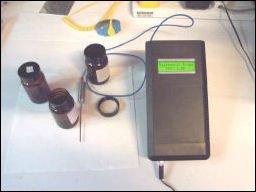Dr Paul Robertson, Dr Tim Wilkinson and PhD student Bryan McLaughlin from the Department of Engineering have recently secured funding from the Medical Research Council (MRC) to develop a probe that can be used to determine the quality of human livers prior to organ transplant.

Throughout the organ transplant procedure, liver tissue undergoes irreversible thermal and chemical changes that are detrimental to the recipient. In severe cases, this tissue degradation can be fatal. Sometime ago, Paul was approached by Mr Chris Watson from the Department of Surgery at Addenbrooke's hospital to develop such a sensor, and this project follows on from an initial study using a prototype electronic probe built in the Department of Engineering.
Fatty Liver Disease, inflammation, and fibrosis of the donor organ are known to be key factors in determining the pre-transplant suitability and post-transplant health of an organ. The screening process would benefit from an accurate, rapid and point-of-use instrument to provided surgeons with a quantitative assessment of the tissue quality. Donor organs are a scarce resource, hence it is crucial to use as many as possible of those organs available; but this must be balanced by the fact that making the wrong decision about the quality of a liver may be fatal.
Paul and his team are working on a dual sensing electro-optical system which combines Radio Frequency (RF) and Near-Infrared (NIR) sensing techniques. Diseased or fatty tissue has very different physical properties to healthy tissue and so the sensor should be able to discern tiny nuances between them. Hybridizing these two sensing techniques will yield superior measurements to those obtained by using either of these techniques independently.

